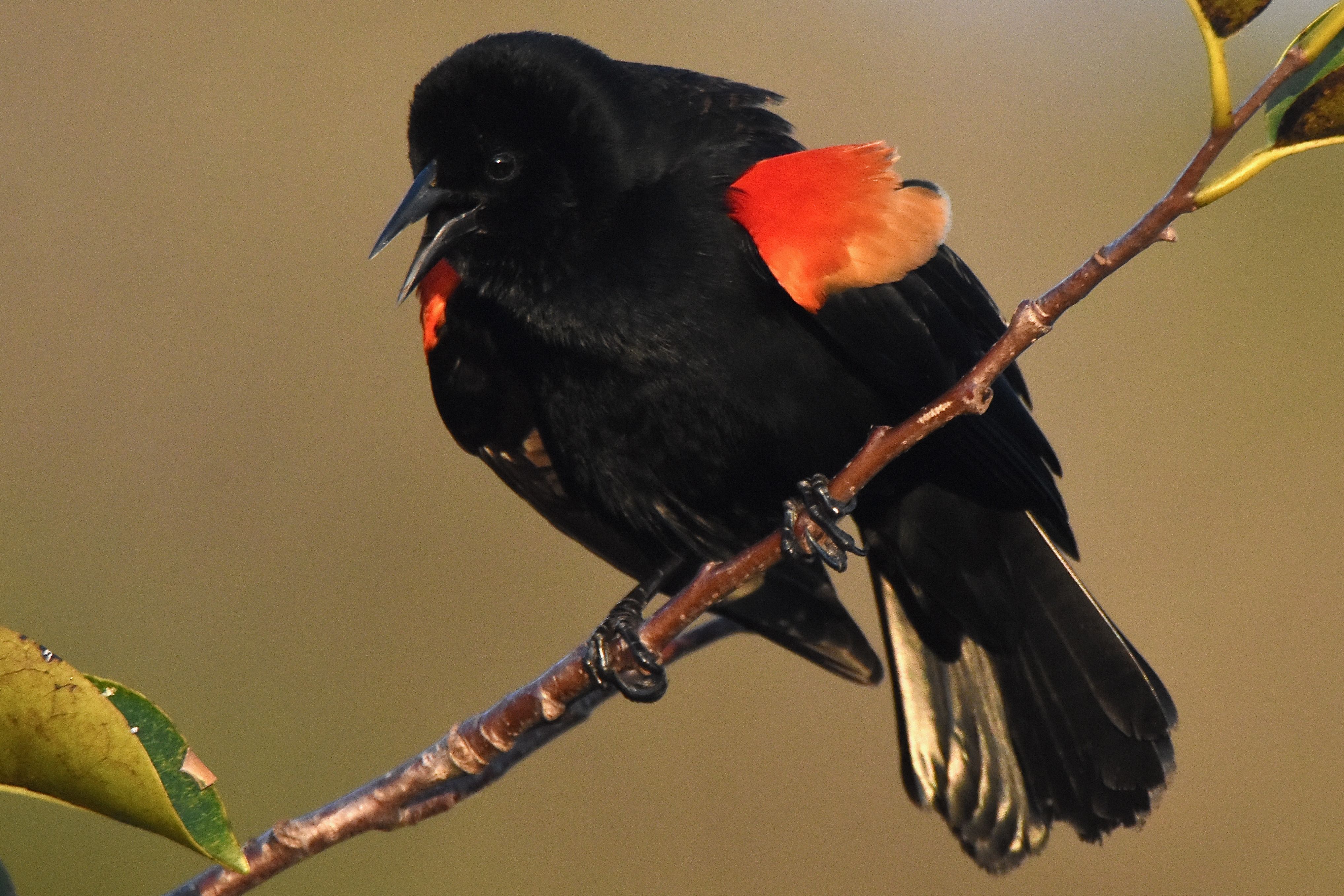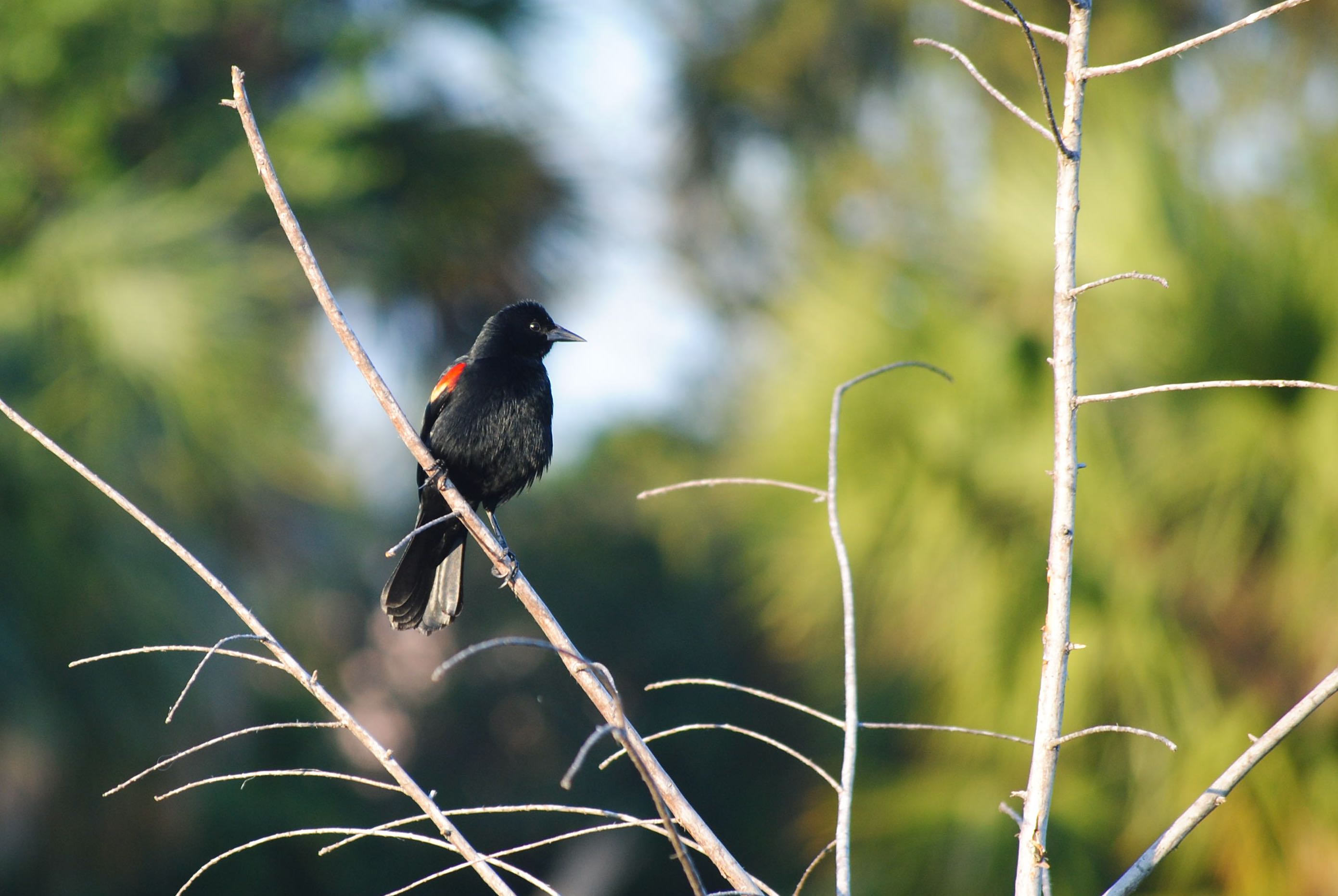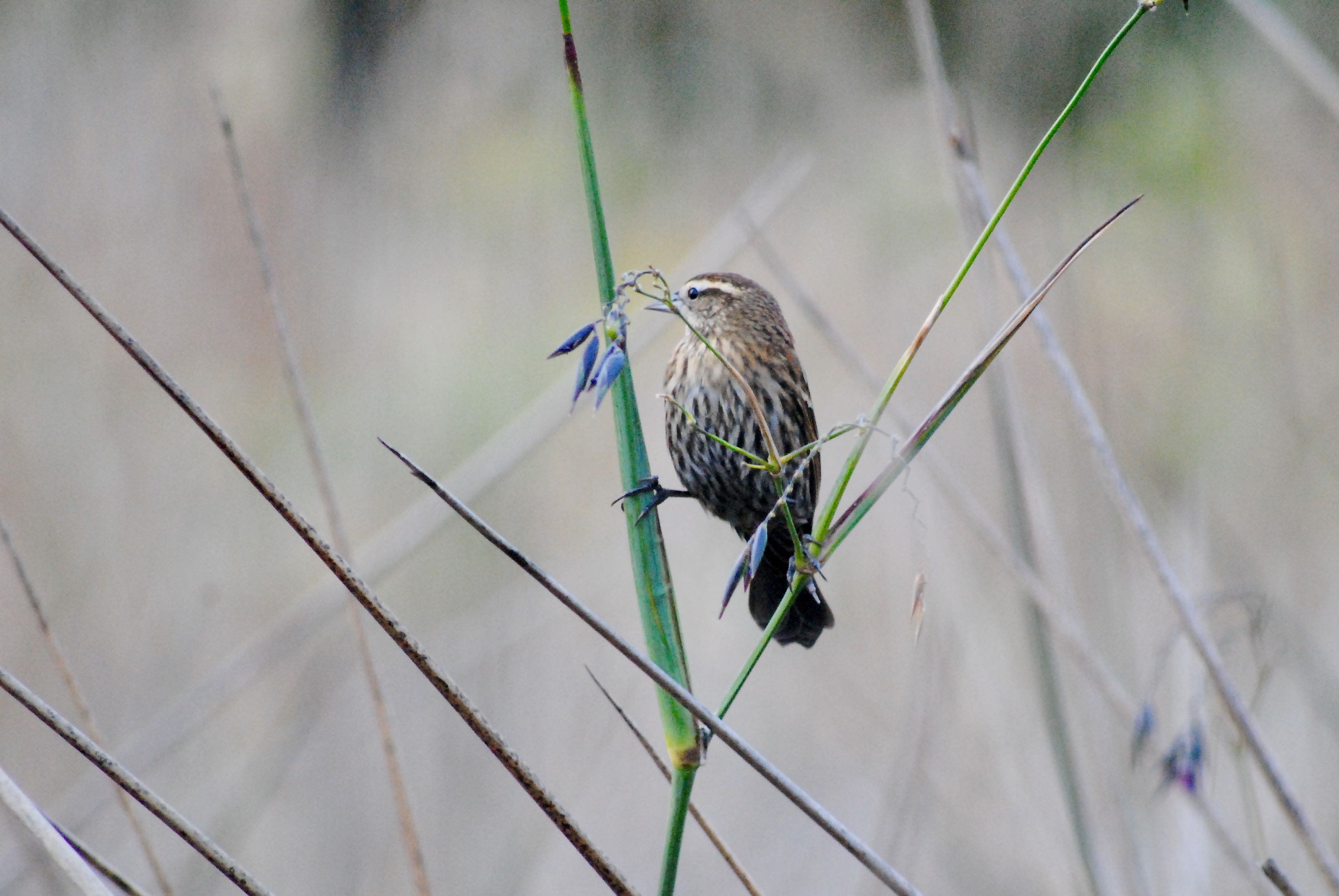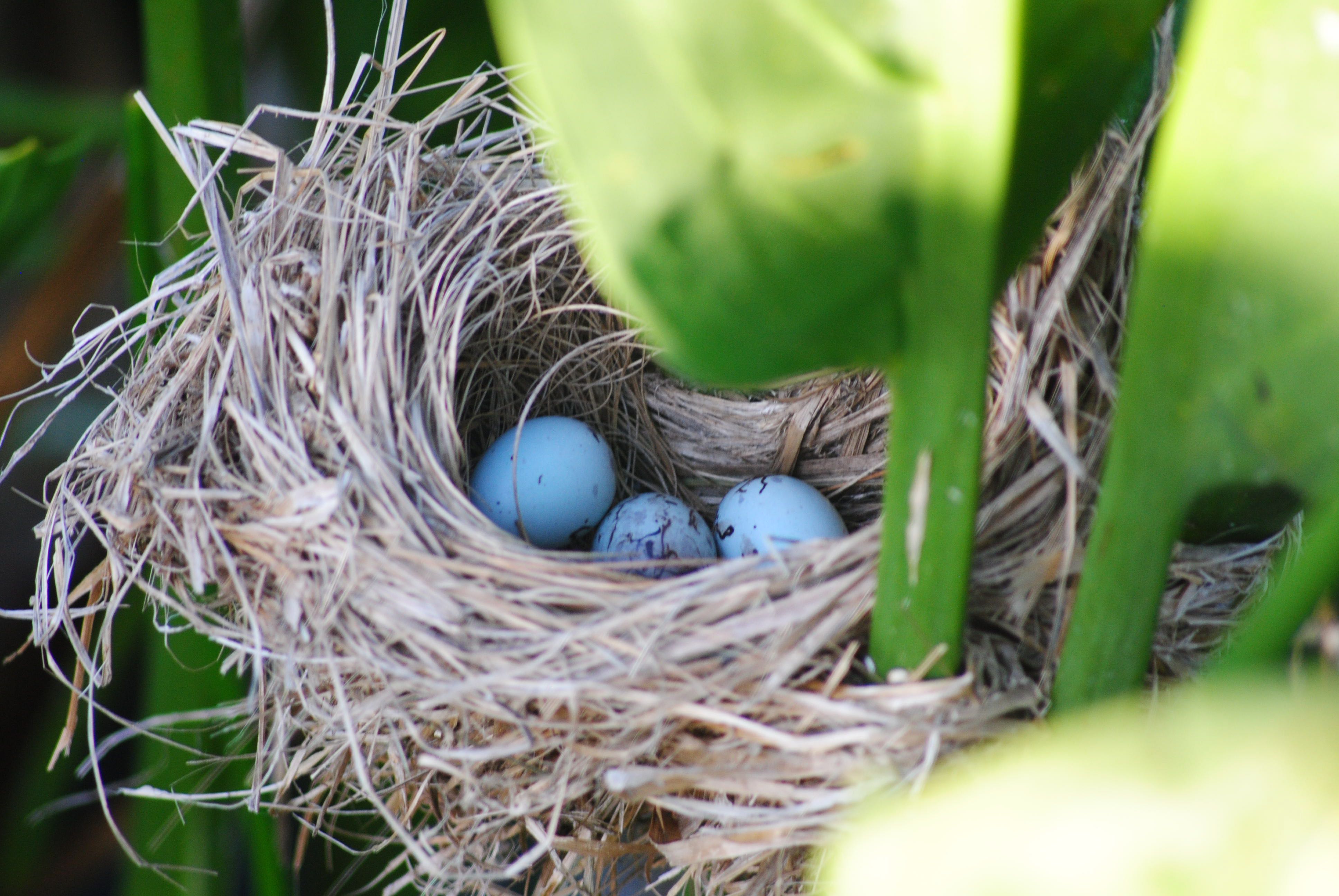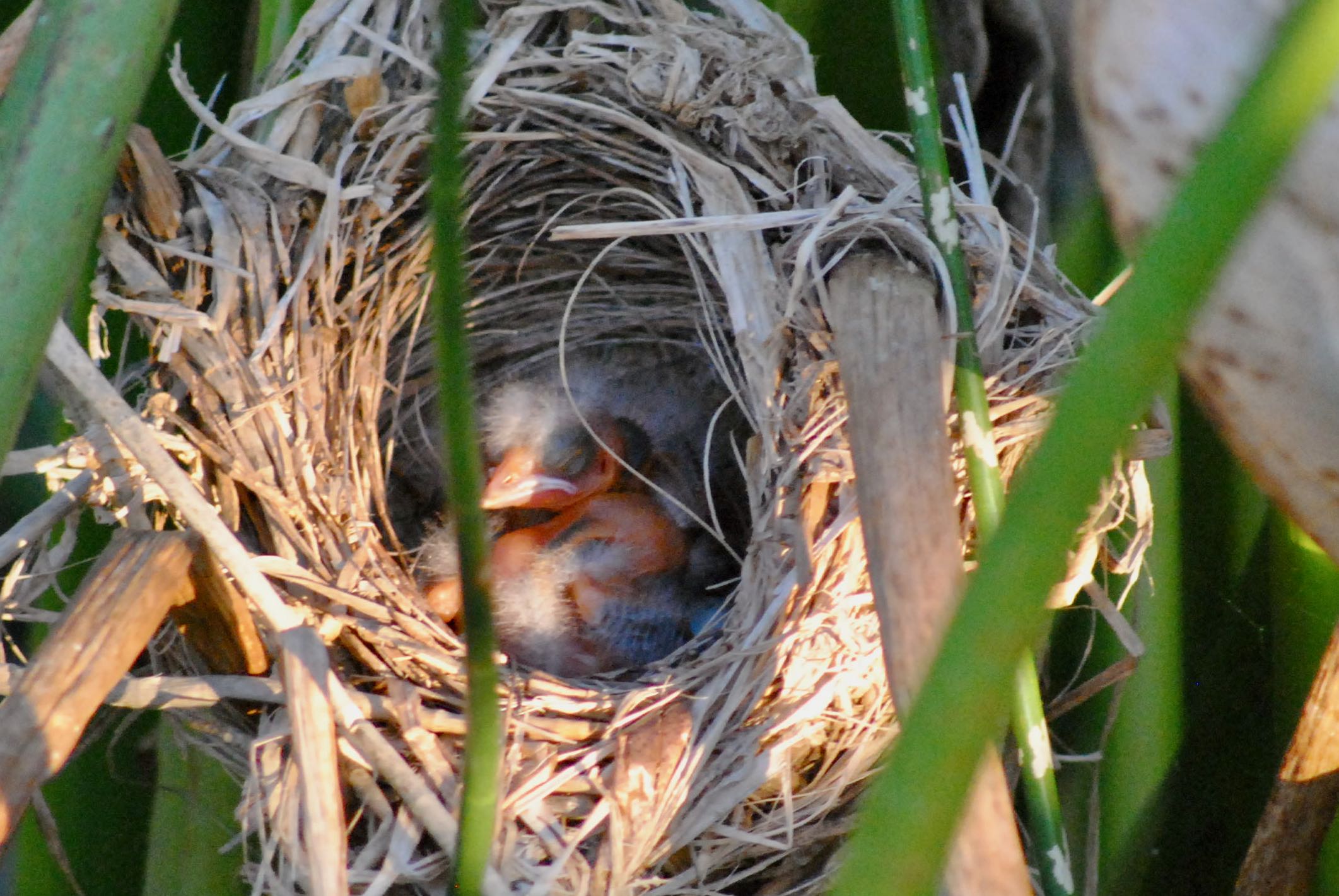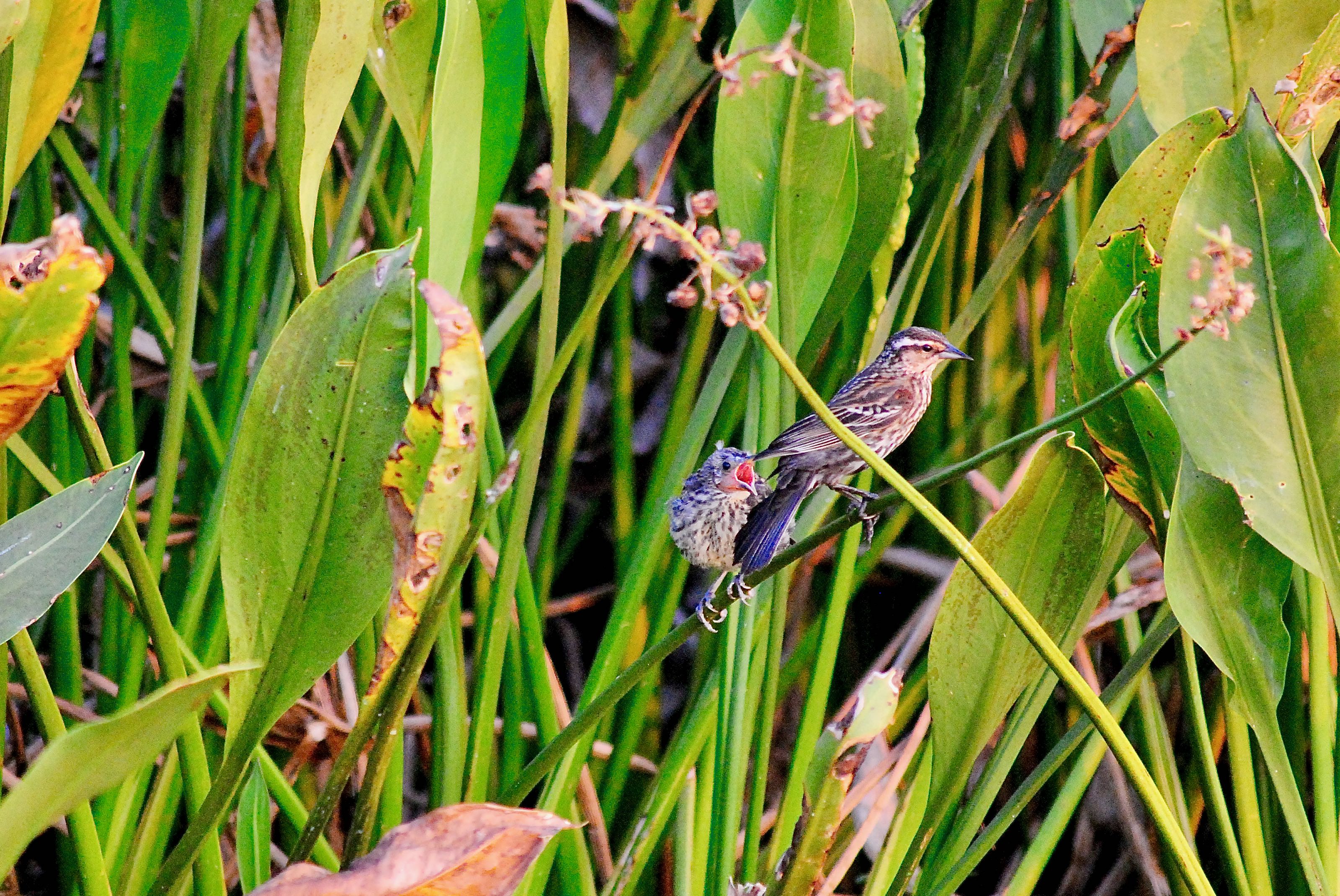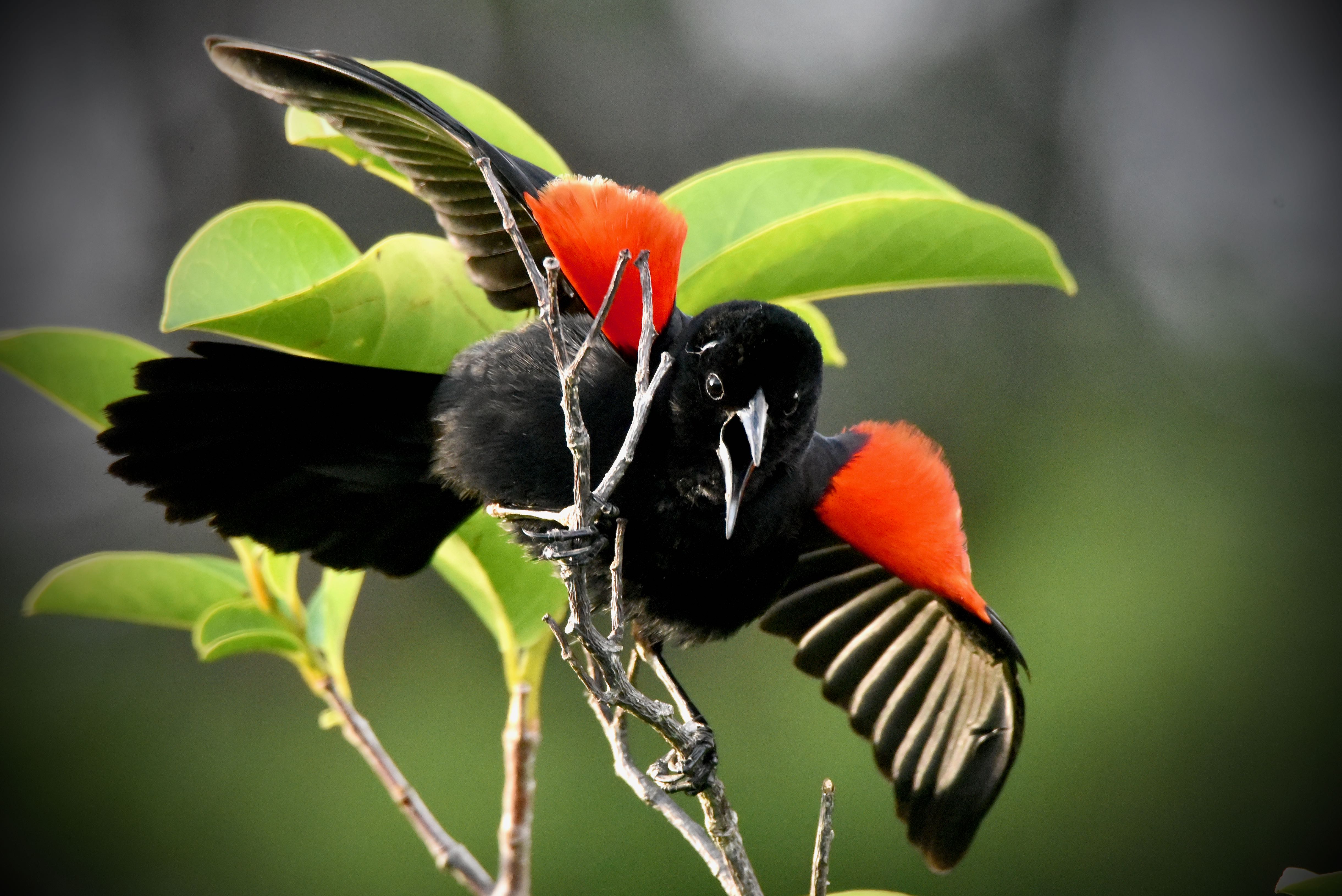
Red-winged blackbird, photographed at Green Cay Nature Center, Boynton Beach, Palm Beach County, in April 2019.
These birds are absolutely fearless. Red-winged blackbirds, Agelaius phoeniceus, are small birds but one of the most aggressive when it comes to defending territory. They'll chase out birds two or three times their size, including hawks.
Red-winged blackbirds are among the most common and easily identifiable birds in South Florida. At times, they'll fill the tall aquatic weeds of a wetland with their presence. And if you don't see them, you'll certainly hear them. They are loud, sometimes melodious, sometimes not.
This is one of those species where males and females sport completely different looks. Males are black with red and yellow epaulets that can be spectacularly bright at times, especially when the bird is flying. Females are brownish, dull-looking, by comparison. They resemble sparrows, but are much larger.
Red-wingeds can be found almost anywhere in North America. They are stay-at-home birds throughout most of the United States, including Florida. But some are migratory, spending summers in the northern tier of the country, including Alaska, and into Canada's Yukon and Northwest territories. Red-winged blackbirds range south into Mexico and Central America.
Red-winged blackbirds tend to hang out in wet habitats, perching on reedy plants like fireflag. They breed in the spring; females weave a basket using grass and leaves and mud just a few feet off the ground (See photos below) in a tree or shrub or upright plants.
Females handle all nest construction; the male might have some say in its location but that's it. A typical clutch has three or four baby-blue eggs; Females handle all the sitting, which takes less than two weeks.
Both parents feed the young, but the female will do more of it than the male. Red-winged blackbird young fledge in 11 days to two weeks, but we've seen females continuing to feed their offspring well afterwards. As we said earlier, these are territorial birds. A male will mate with the females nesting in his slice of the marsh — as many as 15, according to Cornell — but other males will sneak in if they get a chance. In one study, as many as a quarter of red-winged blackbird nestlings were sired by someone other than the territorial male, again according to Cornell.
Red-winged blackbirds nest in loose colonies. In Florida, nesting season runs from early March to about mid-July.
Red-winged blackbirds are on the smaller side, with a body length between seven and nine inches. Wingspans can approach 16 inches. And despite the disparity in looks, both males and females are about the same size. Food for red-winged blackbirds include bugs and seeds with a little fruit mixed in. They forage on the ground, often in groups with other blackbirds such as grackles and starlings. In places, they will roost together in winter.
Red-winged blackbirds are members of Icteridae, the blackbird and oriole family.
Green Cay Nature Center

